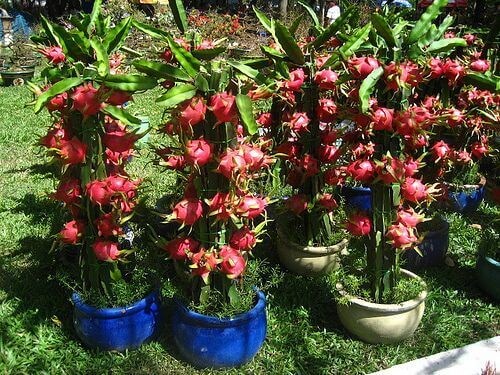
Plants That Don’t Benefit from Epsom Salt
Epsom salt, also known as magnesium sulfate, is a popular gardening supplement that many gardeners use to provide essential nutrients to their plants. While it can be beneficial for some plants, it’s important to note that not all plants will benefit from the addition of Epsom salt. In fact, using Epsom salt on plants that don’t need it can actually do more harm than good. In this comprehensive guide, we’ll explore which plants don’t like Epsom salt and why, as well as provide tips on how to use it safely and effectively on plants that do benefit from it. Additionally, we’ll include a FAQ section to address common concerns and a table summarizing key points with a link to a reliable source for further information.
Plants That Don’t Require Epsom Salt
- Azaleas and Rhododendrons: These plants prefer acidic soil and are unlikely to benefit from the addition of Epsom salt, which can raise the soil’s pH level.
- Blueberries: Like azaleas and rhododendrons, blueberries thrive in acidic soil and may not respond well to Epsom salt.
- Gardenias: While gardenias can benefit from magnesium, they prefer a more acidic soil environment that Epsom salt may disrupt.
- Potatoes: Potatoes are sensitive to high levels of magnesium and may experience reduced yields if Epsom salt is applied in excess.
- Roses: While Epsom salt can be beneficial for roses in some cases, it’s not a universal remedy. Roses are more likely to benefit from a balanced fertilizer or soil amendments tailored to their specific needs.
- Succulents and Cacti: These plants have different nutrient requirements than most other plants and are unlikely to benefit from the addition of Epsom salt.
- Tomatoes: While Epsom salt can be beneficial for tomatoes in some cases, such as preventing blossom-end rot, it’s not a one-size-fits-all solution. Tomatoes are more likely to benefit from a balanced fertilizer or soil amendments tailored to their specific needs.
Why Some Plants Don’t Benefit from Epsom Salt
There are a few reasons why some plants don’t benefit from the addition of Epsom salt:
- Soil pH: Plants that prefer acidic soil, such as azaleas, rhododendrons, and blueberries, may not respond well to the addition of Epsom salt, which can raise the soil’s pH level.
- Nutrient Imbalances: Adding Epsom salt to soil that already has sufficient magnesium levels can create nutrient imbalances that can harm plant growth.
- Specific Nutrient Requirements: Some plants, such as succulents and cacti, have different nutrient requirements than most other plants and may not benefit from the addition of Epsom salt.
- Sensitivity to Magnesium: Plants like potatoes are sensitive to high levels of magnesium and may experience reduced yields if Epsom salt is applied in excess.
Using Epsom Salt Safely and Effectively
While not all plants benefit from the addition of Epsom salt, it can be a valuable supplement for plants that are deficient in magnesium or prone to specific nutrient deficiencies. Here are some tips for using Epsom salt safely and effectively:
- Test Your Soil: Before applying Epsom salt, test your soil to determine if it’s deficient in magnesium and if the addition of Epsom salt is necessary.
- Follow Recommended Dosages: When using Epsom salt, follow the recommended dosages based on the specific plant’s needs and the size of the plant or growing area.
- Apply at the Right Time: Apply Epsom salt at the appropriate time in the growing season, such as during planting or as a foliar spray during the growing season.
- Use in Moderation: Avoid over-applying Epsom salt, as excessive amounts can create nutrient imbalances and harm plant growth.
- Combine with Other Nutrients: Use Epsom salt in conjunction with other essential nutrients, such as nitrogen and phosphorus, to ensure that plants receive a balanced diet.
FAQ Section
- Can I use Epsom salt on all types of plants?
No, Epsom salt should not be used on all types of plants. Some plants, such as azaleas, rhododendrons, and blueberries, may not benefit from the addition of Epsom salt, and in some cases, it can harm plant growth. - How do I know if my plants need Epsom salt?
The best way to determine if your plants need Epsom salt is to test your soil for magnesium deficiency. If your soil is deficient in magnesium, your plants may benefit from the addition of Epsom salt. - Can I use Epsom salt with other fertilizers?
Yes, Epsom salt can be used in conjunction with other fertilizers to provide a balanced nutrient profile for plants. However, it’s important to follow the recommended dosages for each product to avoid nutrient imbalances. - Is Epsom salt safe for pets and children?
Epsom salt is generally considered safe for pets and children when used as directed. However, it’s always best to keep Epsom salt and other gardening products out of reach of children and pets. - What should I do if my plants show signs of toxicity after using Epsom salt?
If your plants show signs of toxicity, such as stunted growth or yellowing leaves, discontinue the use of Epsom salt immediately. Flush the soil with water to help remove any excess salt, and monitor the plant’s progress. If symptoms persist, consult with a local extension agent or horticulturist for further guidance.
Summary Table
| Plant Type | Epsom Salt Benefit |
|---|---|
| Azaleas | No benefit |
| Blueberries | No benefit |
| Gardenias | No benefit |
| Potatoes | May experience reduced yields |
| Roses | Not a universal remedy |
| Succulents | No benefit |
| Tomatoes | Not a one-size-fits-all solution |
For more information on using Epsom salt in gardening, you can refer to the USDA National Agricultural Library.In conclusion, while Epsom salt can be a valuable addition to your gardening routine for some plants, it’s not a one-size-fits-all solution. By understanding which plants don’t benefit from Epsom salt and why, you can make informed decisions about when and how to use it in your garden. Remember to always test your soil, follow recommended dosages, and use Epsom salt in moderation to ensure the health and productivity of your plants.





